Celebrities
Festival
From Wikipedia, the free encyclopedia
For other uses, see Festival (disambiguation).
"Festivity" redirects here. For the ship, see MV Festivity.
A festival is an event ordinarily celebrated by a community and centering on some characteristic aspect of that community and its religion or traditions, often marked as a local or national holiday, mela, or eid. Next to religion and folklore, a significant origin is agricultural. Food is such a vital resource that many festivals are associated with harvest time. Religious commemoration and thanksgiving for good harvests are blended in events that take place in autumn, such as Halloween in the northern hemisphere and Easter in the southern.
Festivals often serve to fulfill specific communal purposes, especially in regard to commemoration or thanksgiving. The celebrations offer a sense of belonging for religious, social, or geographical groups, contributing to group cohesiveness. They may also provide entertainment, which was particularly important to local communities before the advent of mass-produced entertainment. Festivals that focus on cultural or ethnic topics also seek to inform community members of their traditions; the involvement of elders sharing stories and experience provides a means for unity among families.
In Ancient Greece and Rome, festivals such as the Saturnalia were closely associated with social organisation and political processes as well as religion.[1][2][3] In modern times, festivals may be attended by strangers such as tourists, who are attracted to some of the more eccentric or historical ones.[4]
Contents
[hide]Etymology[edit]
The word "festival" was originally used as an adjective from the late fourteenth century, deriving from Latin via Old French.[5] In Middle English, a "festival dai" was a religious holiday.[6] Its first recorded used as a noun was in 1589 (as "Festifall").[5] Feast first came into usage as a noun circa 1200,[7] and its first recorded use as a verb was circa 1300.[8] The term "feast" is also used in common secularparlance as a synonym for any large or elaborate meal. When used as in the meaning of a festival, most often refers to a religious festival rather than a film or art festival. In the Philippines and many other former Spanish colonies, the Spanish word fiesta is used to denote a communal religious feast to honor a patron saint.
Traditions[edit]
Many festivals have religious origins and entwine cultural and religious significance in traditional activities. The most important religious festivals such as Christmas, Hanukkah, Diwali, and Eid al-Adha serve to mark out the year. Others, such as harvest festivals, celebrate seasonal change. Events of historical significance, such as important military victories or other nation-building events also provide the impetus for a festival. An early example is the festival established by Ancient Egyptian Pharaoh Rameses III celebrating his victory over the Libyans.[9] In many countries, royal holidays commemorate dynastic events just as agricultural holidays are about harvests. Festivals are often commemorated annually.
There are numerous types of festivals in the world and most countries celebrate important events or traditions with traditional cultural events and activities. Most culminate in the consumption of specially prepared food (showing the connection to "feasting") and they bring people together. Festivals are also strongly associated with national holidays. Lists of national festivals are published to make participation easier.[10]
Types of festivals[edit]
Religious festivals[edit]
Main article: Religious festival
Among many religions, a feast is a set of celebrations in honour of God or gods.[11] A feast and a festival are historically interchangeable. Most religions have festivals that recur annually and some, such as Passover, Easter and Eid al-Adha are moveable feasts - that is, those that are determined either by lunar or agricultural cycles or the calendar in use at the time. The Sed festival, for example, celebrated the thirtieth year of an Egyptian pharaoh's rule and then every three (or four in one case) years after that.[12]
In the Christian liturgical calendar, there are two principal feasts, properly known as the Feast of the Nativity of our Lord (Christmas) and the Feast of the Resurrection, (Easter). In the Catholic, Eastern Orthodox, and Anglican liturgical calendars there are a great number of lesser feasts throughout the year commemorating saints, sacred events or doctrines.
Buddhist religious festivals, such as Esala Perahera are held in Sri Lanka and Thailand.[13] Hindu festivals, such as Holi are very ancient. The Sikh community celebrates the Vaisakhi festival marking the new year and birth of the Khalsa.[14]
| Religious festivals | ||||||||
|---|---|---|---|---|---|---|---|---|
|
Arts festivals[edit]
Main article: Arts festival
Among the many offspring of general arts festivals are also more specific types of festivals, including ones that showcase intellectual or creative achievement such as science festivals, literary festivals and music festivals.[15] Sub-categories include comedy festivals, rock festivals, jazz festivals and buskers festivals; poetry festivals,[16] theatre festivals, and storytelling festivals; and re-enactment festivals such as Renaissance fairs.
Film festivals involve the screenings of several different films, and are usually held annually. Some of the most significant film festivals include the Berlin International Film Festival, the Venice Film Festival and the Cannes Film Festival.
| Arts festivals | ||||||
|---|---|---|---|---|---|---|
|
Food and drink festivals[edit]
Main article: Food festival
A food festival is an event celebrating food or drink. These often highlight the output of producers from a certain region. Some food festivals are focused on a particular item of food, such as the National Peanut Festival in the United States, or the Galway International Oyster Festival in Ireland. There are also specific beverage festivals, such as the famous Oktoberfest in Germany for beer. Many countries hold festivals to celebrate wine. One example is the global celebration of the arrival of Beaujolais nouveau, which involves shipping the new wine around the world for its release date on the third Thursday of November each year.[17][18] Both Beaujolais nouveau and the Japanese rice wine sake are associated with harvest time.
| Food and drink festivals | ||||||||
|---|---|---|---|---|---|---|---|---|
|
Seasonal and harvest festivals[edit]
Seasonal festivals, such as Beltane, are determined by the solar and the lunar calendars and by the cycle of the seasons, especially because of its effect on food supply, as a result of which there is a wide range of ancient and modern harvest festivals. Ancient Egyptians relied upon the seasonal inundation caused by the Nile River, a form of irrigation, which provided fertile land for crops.[19] In the Alps, in autumn the return of the cattle from the mountain pastures to the stables in the valley is celebrated as Almabtrieb. A recognized winter festival, the Chinese New Year, is set by the lunar calendar, and celebrated from the day of the second new moon after the winter solstice. Dree Festival of the Apatanis living in Lower Subansiri District of Arunachal Pradesh is celebrated every year from July 4 to 7 by praying for a bumper crop harvest.[20]
Midsummer or St John's Day, is an example of a seasonal festival, related to the feast day of a Christian saint as well as a celebration of the time of the summer solstice in the northern hemisphere, where it is particularly important in Sweden. Winter carnivals also provide the opportunity to utilise to celebrate creative or sporting activities requiring snow and ice.
| Seasonal and harvest festivals | ||||||||
|---|---|---|---|---|---|---|---|---|
|
Study of festivals[edit]
- Festive ecology - explores the relationships between the symbolism and the ecology of the plants, fungi and animals associated with cultural events such as festivals, processions and special occasions.
- Heortology - the study of religious festivals. It was originally only used in respect of Christian festivals,[21] but it now covers all religions, in particular those of Ancient Greece.[22] See list of foods with religious symbolism for some topical overlap.
Calendar of saints
From Wikipedia, the free encyclopedia(Redirected from Feast day)The calendar of saints is a traditional Christian method of organizing a liturgical year by associating each day with one or more saintsand referring to the day as the feast day or feast of said saint. (The word "feast" in this context does not mean "a large meal, typically a celebratory one", but instead "an annual religious celebration, a day dedicated to a particular saint".)[1]The system arose from the early Christian custom of commemorating each martyr annually on the date of his or her death, or birth into heaven, a date therefore referred to in Latin as the martyr's dies natalis ("day of birth"). In the Eastern Orthodox Church, a calendar of saints is called a Menologion.[2] "Menologion" may also mean a set of icons on which saints are depicted in the order of the dates of their feasts, often made in two panels.History[edit]
As the number of recognized saints increased during Late Antiquity and the first half of the Middle Ages, eventually every day of the year had at least one saint who was commemorated on that date. To deal with this increase, some saints were moved to alternate days in some traditions or completely removed, with the result that some saints have different feast days in different calendars. For example, St. Perpetua and Felicity died on 7 March, but this date was later assigned to St. Thomas Aquinas, allowing them only a commemoration (see Tridentine Calendar), so in 1908 they were moved one day earlier.[3] When the 1969 reform of the Catholic calendar moved him to 28 January, they were moved back to 7 March (see General Roman Calendar). Both days can thus be said to be their feast day, in different traditions. The Roman Catholic calendars of saints in their various forms, which list those saints celebrated in the entire church, contains only a selection of the saints for each of its days. A fuller list is found in the Roman Martyrology, and some of the saints there may be celebrated locally.The earliest feast days of saints were those of martyrs, venerated as having shown for Christ the greatest form of love, in accordance with the teaching: "Greater love has no one than this, that someone lay down his life for his friends."[4] Saint Martin of Tours is said to be the first[5][6] or at least one of the first non-martyrs to be venerated as a saint. The title "confessor" was used for such saints, who had confessed their faith in Christ by their lives rather than by their deaths. Martyrs are regarded as dying in the service of the Lord, and confessors are people who died natural deaths. A broader range of titles was used later, such as: Virgin, Pastor, Bishop, Monk, Priest, Founder, Abbot, Apostle, Doctor of the Church.The Tridentine Missal has common formulæ for Masses of Martyrs, Confessors who were bishops, Doctors of the Church, Confessors who were not Bishops, Abbots, Virgins, Non-Virgins, Dedication of Churches, and Feast Days of the Blessed Virgin Mary. Pope Pius XIIadded a common formula for Popes. The 1962 Roman Missal of Pope John XXIII omitted the common of Apostles, assigning a proper Mass to every feast day of an Apostle. The present Roman Missal has common formulas for the Dedication of Churches, the Blessed Virgin Mary, Martyrs (with special formulas for missionary martyrs and virgin martyrs), Pastors (subdivided into bishops, generic pastors, founders of churches, and missionaries), Doctors of the Church, Virgins, and (generic) Saints (with special formulas for abbots, monks, nuns, religious, those noted for works of mercy, educators, and [generically] women saints).This calendar system, when combined with major church festivals and movable and immovable feasts, constructs a very human and personalised yet often localized way of organizing the year and identifying dates. Some Christians continue the tradition of dating by saints' days: their works may appear "dated" as "The Feast of Saint Martin". Poets such as John Keats commemorate the importance of The Eve of Saint Agnes.As different Christian jurisdictions parted ways theologically, differing lists of saints began to develop. This happened because the same individual may be considered (as an extreme example) a saint or doctor by one church and a heretic by another, as in the cases of Mar Nestorius, St Dioscorus or St FlavianRanking of feast days[edit]
Main article: Ranking of liturgical days in the Roman RiteFeast days are ranked in accordance with their importance. In the present ordinary form of the Roman Rite, feast days are ranked (in descending order of importance) as solemnities, feasts or memorials (obligatory or optional).[7] The 1962 version, whose use is authorized by the motu proprio Summorum Pontificum as an extraordinary form of the Roman Rite, divides liturgical days into I, II, III, and IV class days, as decreed by Pope John XXIII in 1960. Those who use even earlier forms of the Roman Rite rank feast days as Doubles (of three or four kinds), Semidoubles, and Simples. See Ranking of liturgical days in the Roman Rite.In the Eastern Orthodox Church the ranking of feasts varies from church to church. In the Russian Orthodox Church they are: Great Feasts, middle, and minor feasts. Each portion of such feasts may also be called feasts as follows: All-Night Vigils, Polyeleos, Great Doxology, Sextuple ("sixfold", having six stichera at Vespers and six troparia at the Canon of Matins). There are also distinctions between Simple feasts and Double (i.e., two simple feasts celebrated together). In Double Feasts the order of hymns and readings for each feast are rigidly instructed in Typikon, the liturgy book.In the Church of England, there are Principal Feasts and Principal Holy Days, Festivals, Lesser Festivals, and Commemorations.
See also[edit]
Holiday
From Wikipedia, the free encyclopedia
This article is about days of observance. For a leave of absence or a trip, see Vacation. For leave from employment, see Annual leave. For other uses, see Holiday (disambiguation).
"Observance" redirects here. For other uses, see Observance (disambiguation).
[hide]This article has multiple issues. Please help improve it or discuss these issues on the talk page. (Learn how and when to remove these template messages)
|
A holiday is a day set aside by custom or by law on which normal activities, especially business or work, are suspended or reduced. Generally, holidays are intended to allow individuals to celebrate or commemorate an event or tradition of cultural or religious significance. Holidays may be designated by governments, religious institutions, or other groups or organizations. The degree to which normal activities are reduced by a holiday may depend on local laws, customs, the type of job being held or even personal choices.
The concept of holidays often originated in connection with religious observances. The intention of a holiday was typically to allow individuals to tend to religious duties associated with important dates on the calendar. In most modern societies, however, holidays serve as much of a recreational function as any other weekend days or activities.
In many societies there are important distinctions between holidays designated by governments and holidays designated by religious institutions. For example, in many predominantly Christian nations, government-designed holidays may center on Christian holidays, though non-Christians may instead observe religious holidays associated with their faith. In some cases, a holiday may only be nominally observed. For example, many Jews in the Americas and Europe treat the relatively minor Jewish holiday of Hanukkahas a "working holiday", changing very little of their daily routines for this day.
The word holiday has differing connotations in different regions. In the United States the word is used exclusively to refer to the nationally, religiously or culturally observed day(s) of rest or celebration, or the events themselves, whereas in the U.K. and other Commonwealth nations, the word may refer to the period of time where leave from one’s duties has been agreed, and is used as a synonym to the US preferred vacation. This time is usually set aside for rest, travel and/or the participation in recreational activities, with entire industries targeted to coincide or enhance these experiences. The days of leave may not coincide with any specific customs or laws. Employers and educational institutes may designate ‘holidays’ themselves which may or may not overlap nationally or culturally relevant dates, which again comes under this connotation, but it is the first implication detailed that this article is concerned with.
Contents
[hide]Etymology[edit]
The word holiday comes from the Old English word hāligdæg (hālig "holy" + dæg "day").[1] The word originally referred only to special religious days. In modern use, it means any special day of rest or relaxation, as opposed to normal days away from work or school.
Types of holiday (observance)[edit]
Further information: Lists of holidays
Northern Hemisphere winter holidays[edit]
Main article: Christmas and holiday season
Winter in the Northern Hemisphere features many holidays that involve festivals and feasts. The Christmas and holiday season surrounds the Christmas and other holidays, and is celebrated by many religions and cultures. Usually, this period begins near the start of November and ends with New Year's Day. Holiday season is, somewhat, a commercial term that applies, in the US, to the period that begins with Thanksgiving and ends with New Year's Eve. Some Christian countries consider the end of the festive season to be after the feast of Epiphany.
National holidays[edit]
See also: National Day
Sovereign nations and territories observe holidays based on events of significance to their history. For example, Americans celebrate Independence Day, celebrating the signing of the Declaration of Independence in 1776.
Other secular holidays[edit]
See also: Category:Secular holidays.
Other secular (non-religious) holidays are observed nationally, internationally (often in conjunction with organizations such as the United Nations), and across multi-country regions. An example of a major secular holiday is the Lunar New Year, which is celebrated across Asia. Many other days are marked to celebrate events or people, but are not strictly holidays as time off work is rarely given; examples include Arbor Day (originally US), Labor Day (celebrated sometimes under different names and on different days in different countries), and Earth Day (22 April).
Unofficial holidays[edit]
See also: Category:Unofficial observances.
These are holidays that are not traditionally marked on calendars. These holidays are celebrated by various groups and individuals. Some promote a cause, others recognize historical events not officially recognized, and others are "funny" holidays celebrated with humorous intent. For example, Monkey Day is celebrated on December 14, International Talk Like a Pirate Day is observed on September 19, and Blasphemy Day is held on September 30. Another example April Fool's Day on April 1.
Religious holidays[edit]
Many holidays are linked to faiths and religions (see etymology above). Christian holidays are defined as part of the liturgical year, the chief ones being Easter and Christmas. The Orthodox Christian and Western-Roman Catholic patronal feast day or "name day" are celebrated in each place's patron saint's day, according to the Calendar of saints. Jehovah's Witnesses annually commemorate "The Memorial of Jesus Christ's Death", but do not celebrate other holidays with any religious significance such as Easter, Christmas or New Year's. This holds especially true for those holidays that have combined and absorbed rituals, overtones or practices from non-Christian beliefs into the celebration, as well as those holidays that distract from or replace the worship of Jehovah.[2] In Islam, the largest holidays are Eid ul-Fitr (immediately after Ramadan) and Eid al-Adha (at the end of the Hajj). Ahmadi Muslims additionally celebrate Promised Messiah Day, Promised Reformer Day, and Khilafat Day, but contrary to popular belief, neither are regarded as holidays. Hindus, Jains and Sikhs observe several holidays, one of the largest being Diwali (Festival of Light). Japanese holidays contain references to several different faiths and beliefs. Celtic, Norse, and Neopagan holidays follow the order of the Wheel of the Year. Some are closely linked to Swedish festivities. The Bahá'í Faithobserves 11 annual holidays on dates determined using the Bahá'í calendar. Jews have two holiday seasons: the Spring Feasts of Pesach (Passover) and Shavuot (Weeks, called Pentecost in Greek); and the Fall Feasts of Rosh Hashanah (Head of the Year), Yom Kippur (Day of Atonement), Sukkot (Tabernacles), and Shemini Atzeret (Eighth Day of Assembly).
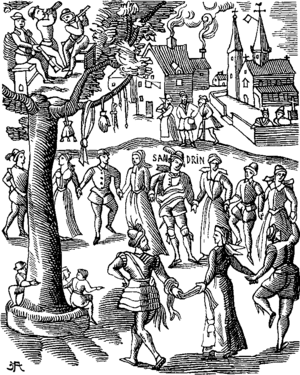





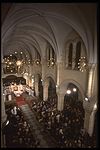










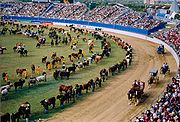


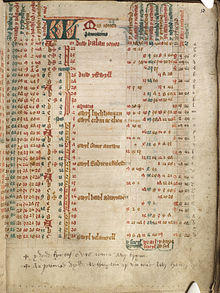
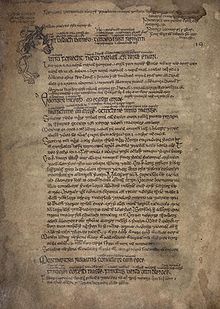
No comments:
Post a Comment